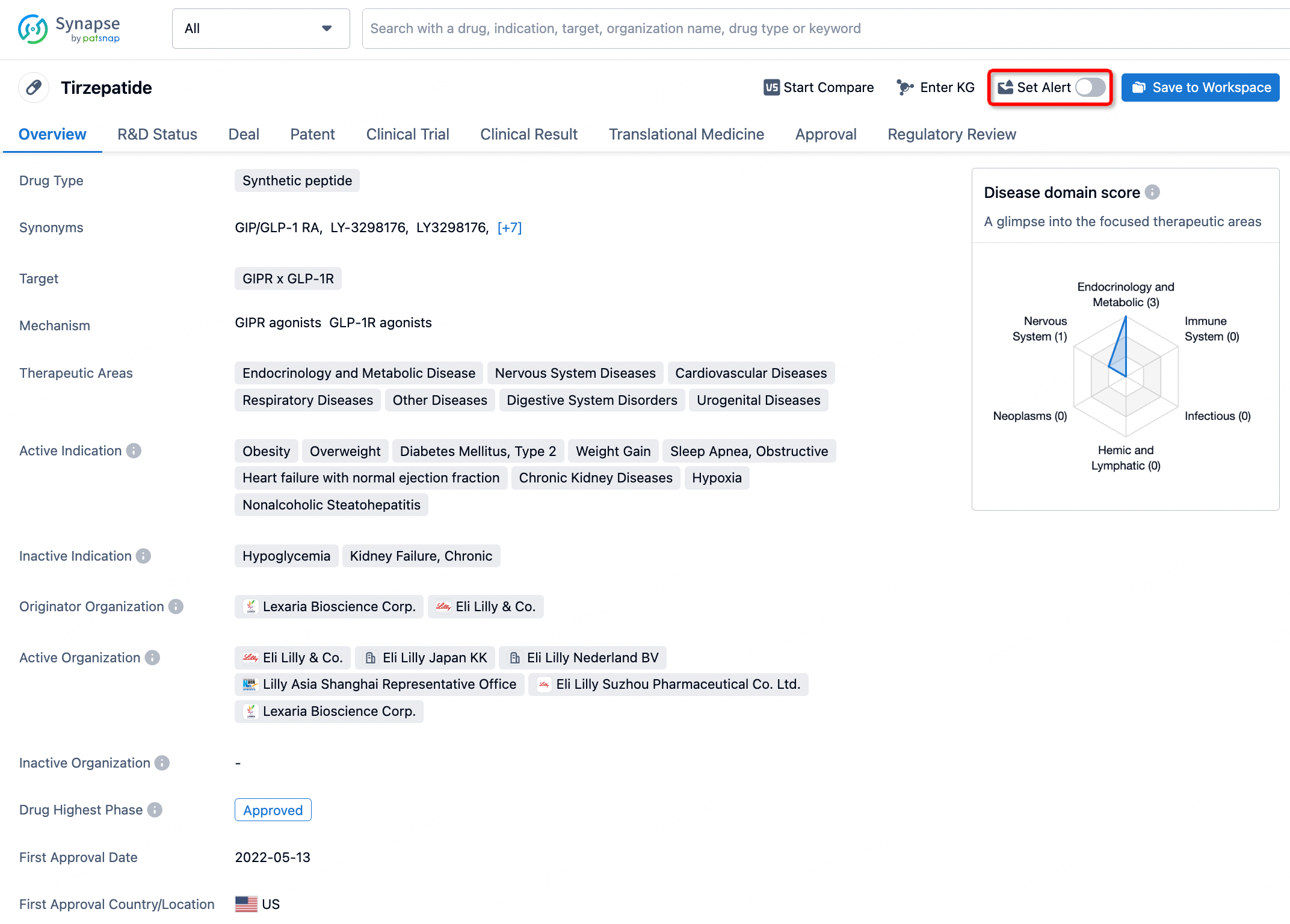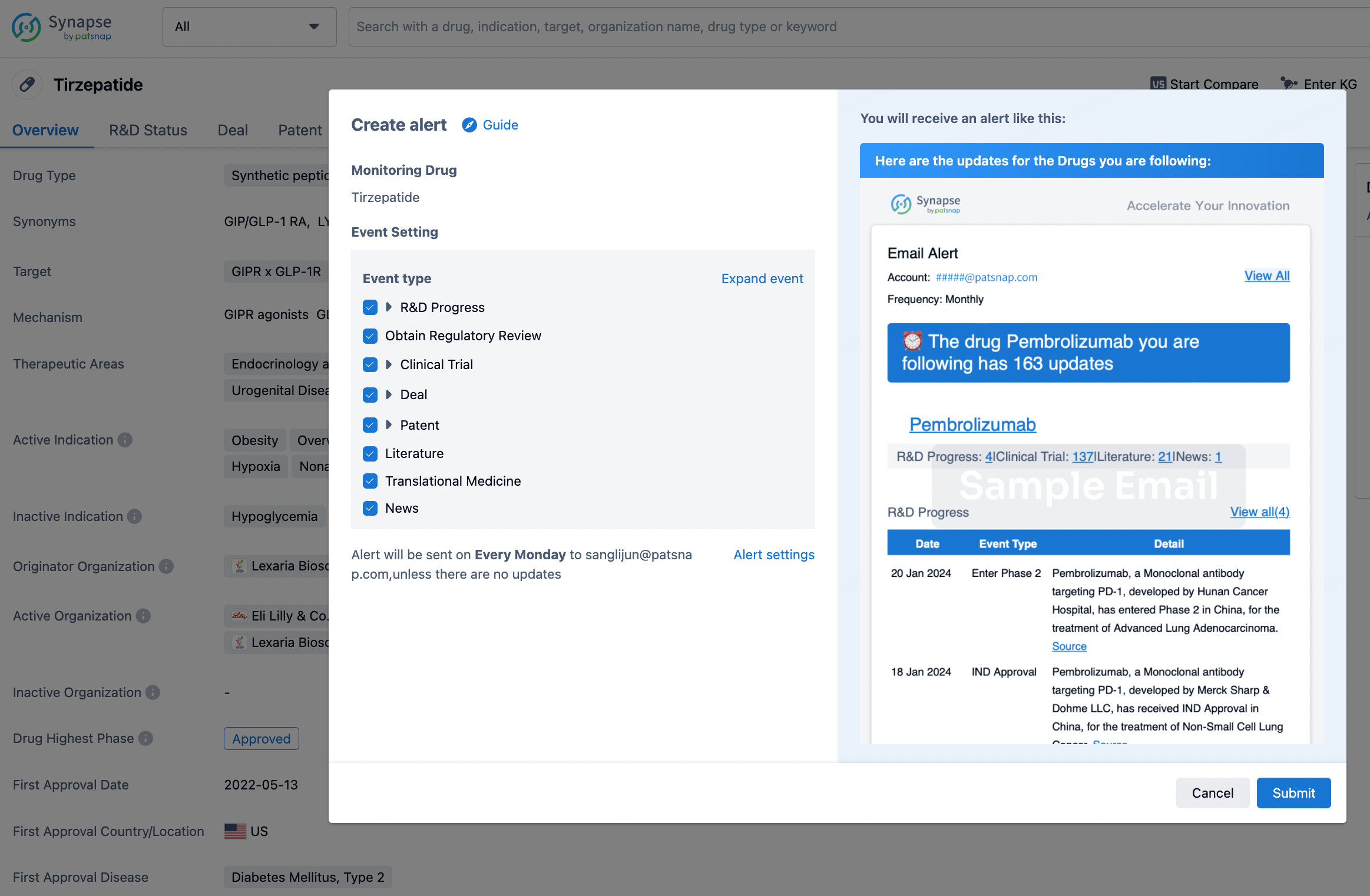Request Demo
What is the mechanism of Capromab Pendetide?
17 July 2024
Capromab Pendetide is a monoclonal antibody used as a diagnostic tool for prostate cancer. It operates through a well-defined mechanism that involves targeting a specific antigen known as Prostate-Specific Membrane Antigen (PSMA), which is expressed in prostate epithelial cells and is upregulated in prostate cancer cells. Understanding the mechanism of Capromab Pendetide requires a closer look at how it interacts with PSMA, its radiolabeling process, and its subsequent imaging capabilities.
Capromab Pendetide is essentially a mouse-derived monoclonal antibody that specifically binds to an intracellular epitope of PSMA. PSMA is an attractive target because it is predominantly found in prostate tissues, including cancerous prostate cells, but is minimally expressed in most other tissues. When Capromab Pendetide is administered to a patient, it circulates through the bloodstream and binds to PSMA-expressing cells.
To make Capromab Pendetide useful for imaging, it is often conjugated to a radioactive isotope, typically Indium-111. This radiolabeling involves attaching Indium-111 to the pendetide portion of Capromab Pendetide, which serves as a chelating agent. The radiolabeled antibody can then be tracked using nuclear medicine imaging techniques, such as single-photon emission computed tomography (SPECT).
Once injected, the Capromab Pendetide binds to PSMA on prostate cancer cells. Due to the presence of the radioactive label, the location of these cells can be visualized by detecting the gamma radiation emitted by Indium-111. The imaging process typically involves a gamma camera that captures the signals emitted from the radiolabel, providing a detailed map of the areas where PSMA is expressed. This allows physicians to identify the presence and extent of prostate cancer, including metastases to other regions such as lymph nodes or bones.
The diagnostic accuracy of Capromab Pendetide is enhanced by its high specificity for PSMA. Because PSMA is overexpressed in prostate cancer cells but not in most normal tissues, the radiolabeled antibody primarily accumulates in cancerous tissues. This targeted approach minimizes background noise and improves the clarity of the imaging results, enabling more precise staging and assessment of the disease.
However, it is important to note that Capromab Pendetide has some limitations. For instance, its efficacy can be influenced by the heterogeneity of PSMA expression among different prostate cancer patients. Moreover, since Capromab Pendetide targets an intracellular epitope of PSMA, it may not bind to all PSMA molecules, particularly those that are not properly internalized or processed by the cancer cells. This can result in variable imaging results and necessitates the use of complementary diagnostic methods for a comprehensive evaluation.
In summary, Capromab Pendetide operates by targeting PSMA, a protein highly expressed in prostate cancer cells, and utilizing a radiolabeled isotope to visualize the distribution of these cancer cells in the body. This mechanism allows for the effective imaging of prostate cancer, aiding in diagnosis, staging, and treatment planning. Despite its limitations, Capromab Pendetide remains a valuable tool in the arsenal against prostate cancer, providing critical insights into the disease's progression and spread.
Capromab Pendetide is essentially a mouse-derived monoclonal antibody that specifically binds to an intracellular epitope of PSMA. PSMA is an attractive target because it is predominantly found in prostate tissues, including cancerous prostate cells, but is minimally expressed in most other tissues. When Capromab Pendetide is administered to a patient, it circulates through the bloodstream and binds to PSMA-expressing cells.
To make Capromab Pendetide useful for imaging, it is often conjugated to a radioactive isotope, typically Indium-111. This radiolabeling involves attaching Indium-111 to the pendetide portion of Capromab Pendetide, which serves as a chelating agent. The radiolabeled antibody can then be tracked using nuclear medicine imaging techniques, such as single-photon emission computed tomography (SPECT).
Once injected, the Capromab Pendetide binds to PSMA on prostate cancer cells. Due to the presence of the radioactive label, the location of these cells can be visualized by detecting the gamma radiation emitted by Indium-111. The imaging process typically involves a gamma camera that captures the signals emitted from the radiolabel, providing a detailed map of the areas where PSMA is expressed. This allows physicians to identify the presence and extent of prostate cancer, including metastases to other regions such as lymph nodes or bones.
The diagnostic accuracy of Capromab Pendetide is enhanced by its high specificity for PSMA. Because PSMA is overexpressed in prostate cancer cells but not in most normal tissues, the radiolabeled antibody primarily accumulates in cancerous tissues. This targeted approach minimizes background noise and improves the clarity of the imaging results, enabling more precise staging and assessment of the disease.
However, it is important to note that Capromab Pendetide has some limitations. For instance, its efficacy can be influenced by the heterogeneity of PSMA expression among different prostate cancer patients. Moreover, since Capromab Pendetide targets an intracellular epitope of PSMA, it may not bind to all PSMA molecules, particularly those that are not properly internalized or processed by the cancer cells. This can result in variable imaging results and necessitates the use of complementary diagnostic methods for a comprehensive evaluation.
In summary, Capromab Pendetide operates by targeting PSMA, a protein highly expressed in prostate cancer cells, and utilizing a radiolabeled isotope to visualize the distribution of these cancer cells in the body. This mechanism allows for the effective imaging of prostate cancer, aiding in diagnosis, staging, and treatment planning. Despite its limitations, Capromab Pendetide remains a valuable tool in the arsenal against prostate cancer, providing critical insights into the disease's progression and spread.
How to obtain the latest development progress of all drugs?
In the Synapse database, you can stay updated on the latest research and development advances of all drugs. This service is accessible anytime and anywhere, with updates available daily or weekly. Use the "Set Alert" function to stay informed. Click on the image below to embark on a brand new journey of drug discovery!
AI Agents Built for Biopharma Breakthroughs
Accelerate discovery. Empower decisions. Transform outcomes.
Get started for free today!
Accelerate Strategic R&D decision making with Synapse, PatSnap’s AI-powered Connected Innovation Intelligence Platform Built for Life Sciences Professionals.
Start your data trial now!
Synapse data is also accessible to external entities via APIs or data packages. Empower better decisions with the latest in pharmaceutical intelligence.


